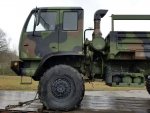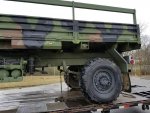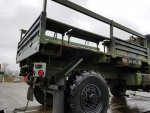Guys just some advice on "SOAP" Spectrometric OiL Analysis, We used it since the 40s in the USAF on Jet engines primarily. That is where it started. IT CAN BE a wonderful tool , but there are a couple of basic things one must understand
1. to be of any value you have to know what metal levels you are looking for, i.e. "babbit" material from the mains , possibly a singular use metal from a pump. If you have singular metal , you can observe the wear rate on that item , BUT, if your trying to observe a wear metal trend on a ferrous metal that's used through out the engine, YOUR WASTEING YOUR TIME, In a jet engine for example the number three bearing retainer key way on a TF 34 100a engine was a nickel alloy, so high nickel and a slight vibration on the number three vibe pick up and you had a bad number three bearing housing, COMPLETE TEAR DOWN TO FIX IT.
2. Trend analysis is only possible with a time on oil factor. You cant track a trend if you change the oil all the time ! ALSO YOU CANT ADD TONS OF OIL IF YOU WANT A RELIABLE TREND, This means you cant be adding oil all the time, Your system cant have a constant little leak that seems ok as long as your dumping a few gallons in every week, It dilutes the wear trend particulate and makes a true analysis near worthless.
Don't believe the guys who say you have high iron and recommend a drain and flush, Iron (or what ever ) is high for a reason, Flushing it just DESTROYS the particulate path, WASHES the crank case clean and mask the problem, the possible failure mode is still there. We used 10 hours of operation (flight) as a standard monitor point. although it could be on an hourly or check after every flight scheduale. Jet engines run at higher RPM, TEMP and the flight envelope can be extreme so the truck engine , which has a much more stable and benign working environment is easier to track. SOAP works for diff, gear boxes, engines, pumps, drives, trannies , you name it, but clues have to be built in , Like a diff, to show wear , shims made of traceable material to show wear, Gears made of dissimilar materials to denote which one is wearing, and most importantly wear metal concentrations have to be evaluated and identified, Normal , Low High , failure ect . I spent years evaluating Jet engines and using SOAP we had an AFSC that did little more than burn samples every day . On your truck your as well off to change fluids and filters regularly, observe operation, listen for sounds and watch the temps . Does the same thing and cost NOTHING but your time











 is to hoping your low milage is accurate.
is to hoping your low milage is accurate.